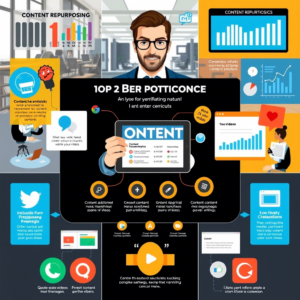In today’s digital world, your inbox is a battleground for attention. Every day, millions of emails are sent worldwide, and the average person receives dozens of messages daily. But here’s the catch: only 20% of those emails are ever opened.
So how do you ensure yours stands out? The answer lies in one crucial element—your email subject line. A compelling subject line can make or break your campaign, turning casual readers into engaged subscribers. In this article, we’ll explore strategies to craft subject lines that grab attention, spark curiosity, and boost open rates.
Whether you’re running a marketing campaign or simply trying to connect with clients, mastering this skill will help you achieve better results.
By the end of this guide, you’ll have actionable tips, real-world examples, and insights on what works (and what doesn’t) when it comes to writing irresistible subject lines. Let’s dive in!
1. Understand Your Audience: Know Who You’re Writing For
The foundation of any successful email starts with understanding your audience. Before crafting your subject line, ask yourself: Who am I speaking to? What motivates them? What problems are they facing? Tailoring your message to resonate with specific demographics increases engagement significantly.
For instance, if you’re targeting busy professionals, focus on saving time or increasing productivity. On the other hand, if your audience consists of students, emphasize affordability or convenience. Personalization plays a key role here too; studies show that personalized subject lines improve open rates by up to 50%.
Example:
Instead of sending an impersonal subject like “Check Out Our New Products,” try something more targeted such as “John, Here Are Tools to Boost Your Productivity.” This small tweak makes the recipient feel valued and acknowledged.
To take personalization further, segment your list based on behavior, preferences, or past interactions. By doing so, you create tailored experiences that cater directly to individual needs.
2. Spark Curiosity Without Being Deceptive
Curiosity is a powerful emotion that compels people to click. However, there’s a fine line between intriguing and misleading. While it’s tempting to exaggerate claims to get clicks, avoid deceptive tactics at all costs—they damage trust and harm long-term relationships.
A great way to pique interest is through teasers or questions. Pose a query that aligns with your reader’s pain points or goals. For example, instead of saying “Top Tips for Losing Weight,” write “Is This the Secret to Losing Weight Faster?” The latter creates intrigue without being overly vague.
Additionally, use action-oriented verbs to encourage immediate responses. Words like “Discover,” “Learn,” “Unlock,” or “Claim” prompt users to engage with your content. Just remember to deliver on your promise once they open the email.
Pro Tip: Keep your subject line concise but meaningful. Research shows that shorter subject lines (around 40-50 characters) tend to perform better across most devices.
3. Leverage Urgency and Scarcity
Humans are naturally drawn to limited-time offers because they fear missing out (FOMO). Incorporating urgency and scarcity into your subject lines can drive higher open rates while encouraging quicker decision-making.
Here’s how you can implement these principles:
Urgency: Use phrases like “Last Chance!” or “Act Now!” to convey immediacy. For example, “Flash Sale Ends Tonight – Don’t Miss Out!”
Scarcity: Highlight exclusivity or availability constraints. Try lines like “Only 10 Spots Left!” or “Exclusive Access Inside.”
Be cautious not to overuse these techniques, though. Bombarding subscribers with constant deadlines may lead to fatigue or mistrust. Instead, reserve urgency for important campaigns or special promotions.
Case Study: According to HubSpot, emails with urgency-based subject lines saw a 22% increase in open rates compared to standard ones. Clearly, timing matters!
4. Test and Optimize Your Approach
No single formula guarantees success for every audience. That’s why testing different approaches is essential. Split-testing (also known as A/B testing) allows you to compare two versions of your subject line and see which performs better.
When conducting tests, consider variables such as length, tone, wording, and even emojis. Yes, emojis! When used appropriately, they can enhance visual appeal and add personality to your message. For example, “🎉 Announcing Our Biggest Sale Ever!” might outperform a plain text version.
Remember to track metrics beyond just open rates. Pay attention to click-through rates (CTR), conversion rates, and unsubscribe rates to gauge overall effectiveness. Over time, analyze patterns and refine your strategy accordingly.
Action Step: Start with simple tests using contrasting styles—one formal, one casual—and observe the difference in performance. Then iterate based on findings.
5. Avoid Common Mistakes That Kill Engagement
Even the best-laid plans can fail if you fall prey to common pitfalls. Below are some errors to steer clear of when writing subject lines:
Overusing Capital Letters and Exclamation Marks: SHOUTING IN ALL CAPS comes off as spammy and desperate. Reserve emphasis for critical moments.
Including Spam Triggers: Certain words like “free,” “win,” or “cash” may trigger spam filters. Be mindful of language that could flag your email unnecessarily.
Neglecting Mobile Optimization: With over 60% of emails opened on mobile devices, ensure your subject line looks good on smaller screens. Cut unnecessary details and prioritize clarity.
By avoiding these mistakes, you position yourself as a credible sender who respects user experience.
Conclusion
Writing effective email subject lines requires a blend of creativity, strategy, and empathy. By knowing your audience, sparking curiosity, leveraging urgency, testing consistently, and sidestepping common blunders, you set the stage for high engagement and conversions.
Take a moment to reflect on your current approach. Are you tailoring messages to suit specific segments? Have you experimented with urgency or tested various tones? There’s always room for improvement, and each tweak brings you closer to achieving desired outcomes.
Now it’s your turn! Share your thoughts below: Which tip resonated most with you? Or better yet, try implementing one idea from this article today and let us know how it goes. Together, let’s elevate our email game and connect meaningfully with audiences around the globe.




